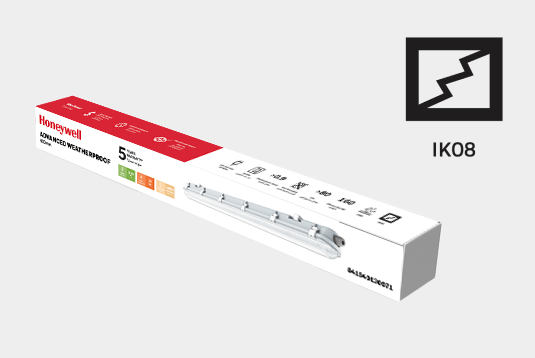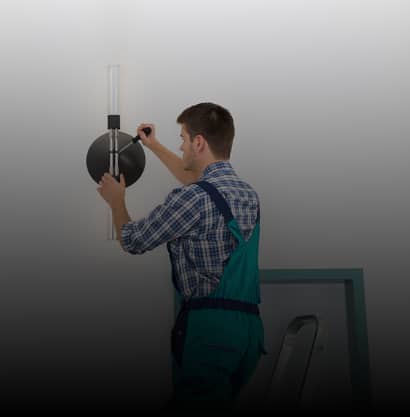In the first two parts of the series, we went through metrics around lighting brightness and power labels, or the lifespan, dimming, and beam angles. In the next section, we unpack everything you need to know about compatibility with the environment or fixtures.
You are here:
- Home
- article
- Part III. Labels Decoded. Going beyond buzzwords on sustainable lighting.
Part III. Labels Decoded. Going beyond buzzwords on sustainable lighting.
December 4, 2023
LED Lights
We’re translating the labels and metrics you need to understand when assessing the right lighting products.


Voltage and Frequency Compatibility
This label tells you the required electrical input for the lighting source. Expressed through Volts and Hertz (Hz), it is a standard adopted by a region or country and may vary. For instance, The standard voltage in most MENA countries ranges between 220V and 240V, and the standard frequency is 50 Hz.
Taking it into account becomes important not only for compatibility with the electrical supply but also as variations in voltage and frequency can determine poor power quality, affecting the performance and lifespan.
What Is the Displacement Factor?
This label reflects how in sync the voltage and current are with each other, measuring the phase angle difference between the voltage and current waveforms in a circuit.
This way, you get to understand how well-aligned the voltage and the current are and, therefore, how efficient the lighting source is. A factor close to 1 indicates more efficient power usage, while a lower one shows less efficiency and potential power quality issues, especially in the case of using reactive power.


Cap/Base of a bulb
The cap or the base is the part that connects the bulb to the power source, providing both mechanical support and electrical connectivity.
There are multiple types of caps and bases, each offering different applications. The screw base, for example, is commonly used in households. You can identify it by the “E” letter, followed by the number that indicates the diameter in millimeters. The pin base, used in specific lamp models, is marked by the “G” letter, followed by a number indicating the number of millimeters between the pins.
Paying attention to the cap/base indicator is, therefore, essential to make sure the bulb is compatible with the lamp or fixture.
The Color Rendering Index
Also known as CRI, it measures the ability of a light source to accurately reproduce the colors of various objects compared to a natural light source. It varies between 0 and 100, with a higher CRI value indicating better color rendering abilities. For example, 100 represents the color rendering of natural daylight. A low CRI might distort specific colors.
The CRI value becomes particularly important for environments where accurate color representation is critical, such as art galleries, retail spaces, or hospitals.


The Ingress Protection rating
The IP is a two-digit measurement of the sealing effectiveness levels against moisture, dirt, or other particles. The first digit of the metric informs you of the level of protection against solid particles, where 0 is the minimum and 6 is the maximum. The second digit refers to the protection against liquids, where 8 represents the maximum—for example, safety against water immersion.
This metric is crucial in assessing the right light source for particular environments, both in terms of safety and longevity. For example, a high IP level might be required for outdoor or industrial settings, but also for the bathroom lighting (compared to the living room).
The IK Rating
The IK rating informs you of the level of protection of the lighting equipment against external mechanical impacts.
It includes a two-digit measurement between 00 and 10, with higher numbers indicating an increased ability to resist accidental or deliberate impact—such as knocks or vandalism. Therefore, it becomes highly important for areas such as public areas or industrial spaces.

In conclusion, it is essential to take into account all the labels found on the package of a lighting source, although they might appear as ignorable details. Knowing how much power it produces, as well as the number of lumens and the color, helps you choose based on your specific needs. Plus, the differentiators—such as the light quality or value over money—help you make a wiser decision in terms of efficiency. Next, considering the lifespan or switching cycles or compatibility factors is also crucial if you want to ensure the durability and longevity of your lighting systems. This way, you are able to make an informed and effective decision when assessing the lighting sources.
recommended Articles
Keep updated with similar articles from the world of lighting. Everything you need to know for an efficient and sustainable life.



